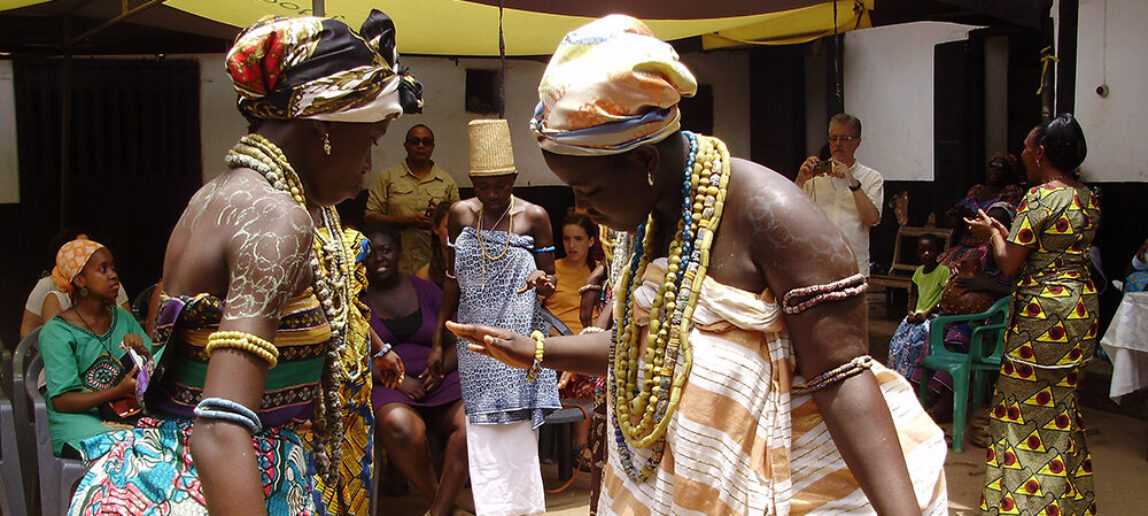Conference Examines Afrofuturism Through Art, Music, Film And Costume Design
A two-day conference titled “Afrofuturism Explored!” will examine the current state of Afrofuturism in honor of Black History Month on Feb. 16-17 at the Liberal Arts and Arts and Humanities Building.
The free event includes panel discussions, art installations, an improvisational performance and film screenings. It is open to faculty, students and the community, presented by the Texas A&M College of Performance, Visualization and Fine Arts, the Race and Ethnic Studies Institute, Visual Materials and Performance Cultures section, Black Student Alliance Council and Media Gaming Lab.
Dr. Will Connor, Performance Studies lecturer and conference organizer, said Afrofuturism, a term first coined by Mark Dery, combines Black culture and science fiction, with a technology-based view of the future through the arts, Connor said. The concepts are heavily portrayed in Marvel’s “Black Panther” comic books and film series through costumes, design, music and creative choices, he said.
“This conference is going to cover what the current state of Afrofuturism is, and what’s changed and what hasn’t changed,” he said. “And what messages are still being reported and how are they being put forth.”
Afrofuturism first intrigued Connor while attending the Atlanta Jazz Festival in 1990. It was there that he met the innovative musician Sun Ra, who Connor describes as one of the main proponents of Afrofuturism, with his experimental jazz based on Afrofuturist concepts.
Connor said he had been a fan of Sun Ra, who died in 1993, since he was a child, and attended as many of his concerts as possible. The musician may have recognized his frequent presence, Connor recalls, as a jazz festival security guard brought him backstage for a conversation at Sun Ra’s request.
“The security guard took me backstage, and I sat in Sun Ra’s tent and talked to him for hours about his music,” Connor said. “He kept saying, ‘You should go back to school and study ethnomusicology.’ So I did, and here I am.”
Dr. Grace Adinku, Performance Studies lecturer, will be hosting a panel discussion that dives into her Ph.D. and master’s thesis on art and Afrofuturism.
Adinku received her Ph.D. in African Art and Culture from the Kwame Nkrumah University of Science and Technology in Kumasi, Ghana. She received her master’s degree in Performance Studies at Texas A&M.
Adinku’s master’s thesis examined the Afrofuturistic elements found in 2018’s “Black Panther” film. She studied the film’s power elements and how they affected the body of costume works created by designer Ruth Carter.
“At the end of my research, I came to the conclusion that most of the creations that Carter made with her creativity in costume design were actually inspired by African cultures,” Adinku said. “It is refreshing to see that the various cultures from different paths of Africa that inspired Carter’s designs were effectively represented and reproduced in each garment. One could basically feel the commitment to detail and sense of artistry in the way she and her team took these raw materials, merged and transformed them with technological ideas to create a Utopian Africa. It allows us to foresee, or project into the future, on how indigenous cultural elements could be a vehicle that drives Africa and diaspora black world into exhibiting their full potential in global power.”
The event includes a screening of Saul Williams’ “Neptune Frost,” which Connor described as a science-fiction film about technology and corporations in society. The second film screening is Sun Ra’s “Space Is the Place,” which is about an alien musician who comes to Earth to rescue oppressed people through music, Connor said. The film is for mature audiences, ages 18 and older.
Connor said he hopes participants will leave with a better understanding of Afrofuturism as an art movement through music, film and collaborative discussions.
“All art movements have a message or a purpose, and it is easy to miss that, especially when it is something cool,” he said. “You look at ‘Black Panther’ and see that it’s cool, but there is a lot more to it hiding under there. I just hope people move forward, and do something with what they learned about Afrofuturism for their own exploration.”
Schedule
Details subject to change.
Friday
2:30 p.m.: Welcome (LAAH 453).
3 p.m.: General Afrofuturism panel (LAAH 453). Featuring Alain Lawo-Sukam (chair), Rebecca Hankins with Jeremy Brett (current state of Afrofuturism) and Sofia Hernandez (NASA and Afrofuturism).
4 p.m.: Sun Ra’s “Space Is the Place” film (Black Box Theater). For mature audiences, 18 and older.
7 p.m.: Afrofuturist Improvisation Performance (Black Box Theater). Featuring music students from PERF 335: Sonic Improvisation with dance students from courses taught by John Cartwright.
9 p.m.: Reception (LAAH first floor).
Saturday
8:30 a.m.: Coffee (LAAH 453).
9 a.m.: Art panel (LAAH 453). Featuring Mayet Andreassen (co-chair), Justin Hopson (co-chair/Afrofuturist digital art at Texas A&M), Vick Lucio with Drew Tirittili (Afrofuturist graffiti art) and Megan Crutcher (archaeology and Afrofuturism).
10 a.m.: Writing panel (LAAH 453). Featuring Rich Cooper (chair), Mayet Andreassen (Afrofuturist fiction influence on digital art), Regina Mills (contemporary Afrofuturist fiction) and Mariot Valcin (current Afrofuturist fiction research).
11 a.m.: Lunch (LAAH fourth floor).
1 p.m.: Saul Williams’ “Neptune Frost” film (Black Box Theater).
3 p.m.: Film and music panel (LAAH 453). Featuring Patrick Sullivan (chair), Matthew Campbell (Afrorealism and Afrofuturism), Rich Cooper and Will Connor (Afrofuturist music and language in Saul Williams’ “Neptune Frost”), Sam Ceballos (graduate student presentation and discussion of Latino-Afrofuturism) and Shalisa Sproles (research on Afrofuturism in female hip-hop vocals).
4 p.m.: Dance and theatre panel (LAAH 453). Featuring David Donkor (chair), Grace Adinku (revisiting her Ph.D. and master’s thesis on Afrofuturism).
5 p.m.: Closing remarks (LAAH 453 or Black Box Theater).
Top photo: Dr. Grace Adinku, Performance Studies lecturer, took this photo of the Dipo puberty rite ceremony among the Krobo-Odumase people in the Eastern region of Ghana. During various phases of the rite, initiates are dressed in dazzling clusters of traditional Krobo beads that reflect the economic status of individual families, and announce the coming of age of the child into womanhood.

